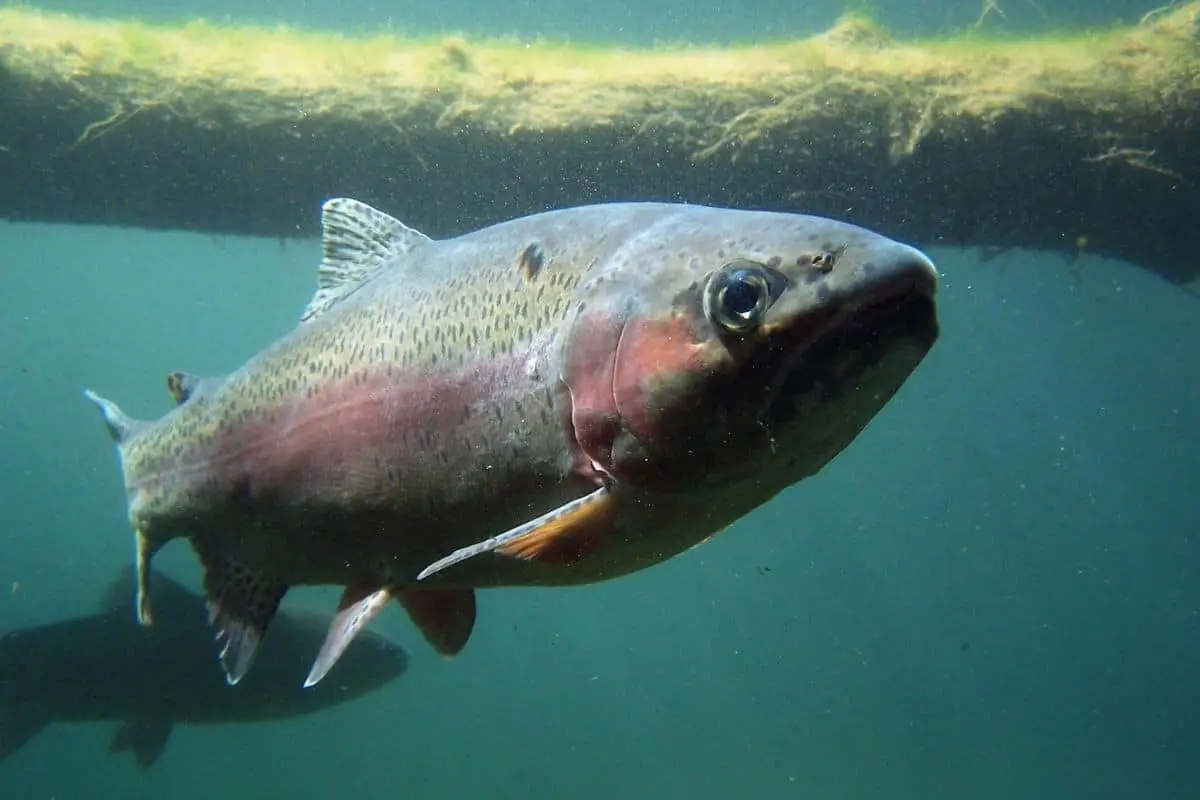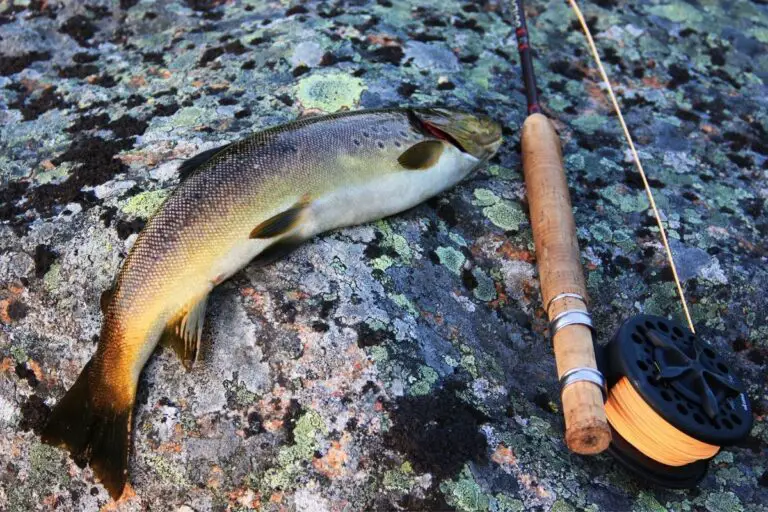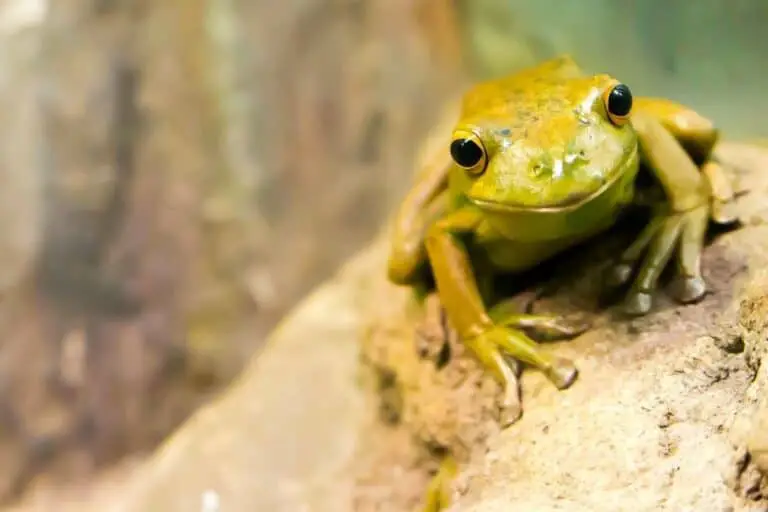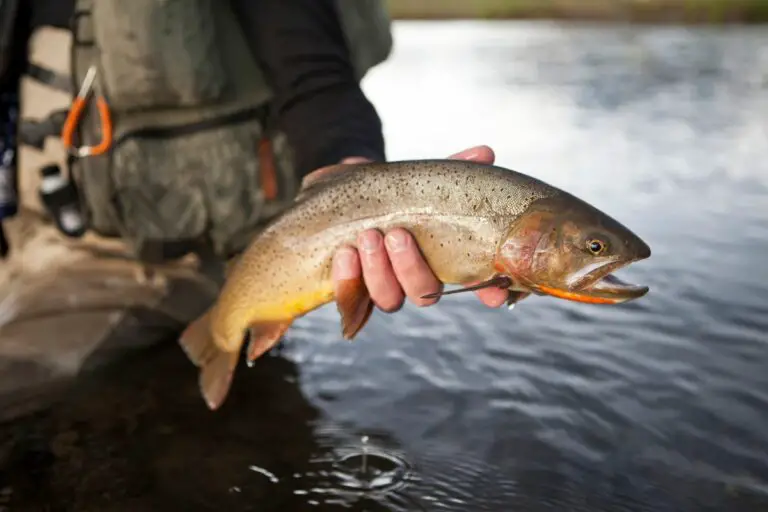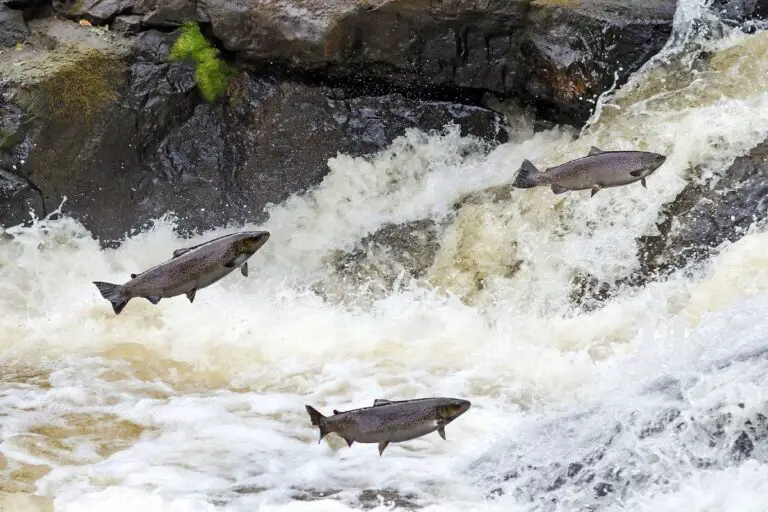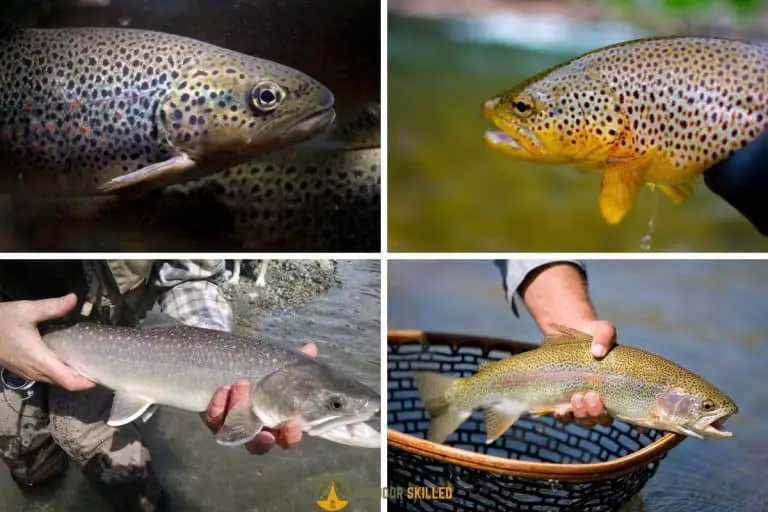Do Trout Bite in the Wind? A Guide for Spectacular Catches
Some trout anglers might shy away from fishing when it’s windy as it makes casting a lot trickier and it’s also hard to locate the fish. However, trout fish are usually resilient against all types of conditions including harsh wind so targeting them when it’s windy could still be a productive and thrilling experience.
So, do trout bite in the wind? Trout do bite in the wind. Windy conditions can cause baitfish to become more active which can cause trout to be more likely to bite. It may be challenging, but if you know how to work the wind to your advantage and use the right kind of gear and bait, you’ll have no problem catching Trout in the wind
Keep reading to learn more about how the wind can affect trout fishing and how to work it to your advantage to catch more trout.
For my guides on how to become the best Trout angler you know, check the end of the article.
Table of Contents
How Does the Wind Affect Trout Fishing?

Windy conditions can have a huge impact on your fishing experience. Depending on its strength, duration, and location, wind can either be a blessing or a curse.
When a steady wind blows in one direction in a certain area it creates a surface current in the water. The majority of baitfish species and insects will be pushed around by these wind-generated currents and concentrate them in one area where trout will be more likely to bite.
Wind also increases the oxygen levels in the water which makes both the trout species and the bait fish more active.
However, fishing for trout in the wind can also have a downside as there will be more disturbance on the water surface which will make casting and controlling your line a bit trickier. Also, it will make spotting trout more difficult.
How to Fish for Trout in the Wind?

Trout are a very sensitive species and they’re very susceptible to the whims of the wind.
The changes in the environment that come with wind such as temperature drops, increased levels of oxygen, and drops in barometric pressure can affect Trout’s normal behavioral patterns and how it feeds
Trout generally prefer cooler temperatures and oxygenated water which is why fishing for them on windy days can be ideal
That’s why fishing for Trout on windy days can be very productive as the water will become cooler and it will have more oxygen in it which will make trout more active and willing to bite.
However, before you head out on the water on a windy day, you need to prepare the right kind and bait. You also need to learn where and when it’s best to target trout.
Let’s break down all these points in more detail.
The Best Gear for Trout Fishing in the Wind
It’s recommended to use a 6-7-foot medium power fishing rod with fast action to improve your casting accuracy and line control against the strong wind. As for the reel, it’s recommended to use a spinning reel. You can check my recommended trout fishing reels here.
For the fishing line, it’s recommended to use a monofilament line with a 6 to 10-pound test or a heavier braided line with a 4 to 6-pound line test. It’s also recommended to attach a fluorocarbon leader with 4 to 6-pound to avoid having the trout bite through your mainline.
Here you can find the best Trout fishing lines.
For the hook, it’s recommended to use size 10 to 14 if you’re using treble hooks or size 8 to 12 if you’re using single hooks. Keep in mind that trout have excellent vision and they will be able to detect hooks easily even in choppy water conditions from the wind. You can check my guide to choosing hooks for trout here.
The Best Baits for Trout Fishing in the Wind
Trout generally prefer natural baits. The scent, color, and movement of natural baits will be highly effective in catching trout in windy conditions.
It’s recommended to use small bait fish like minnows or shiners to target trout. You can also use live worms that are about 2 to 4 inches.
Corn is another effective natural bait option as it looks like fish eggs that trout feed on. Also, the bright yellow color of corn will grab the trout’s attention and get them to bite.
The Best Lures for Trout Fishing in the Wind
Winds can disturb the surface of the water and cause it to become murkier, which can make it difficult for trout to see lures. So, it’s recommended to use lures that create a strong vibrating action to grab their attention such as jigs or spinning lures
Trout are also attracted to lures that can naturally mimic the movement of baitfish such as crankbaits and soft plastic.
Keep in mind that the trout’s excellent vision will allow them to distinguish lure colors. So, it’s important to choose lure colors that are suitable for the water conditions you’re fishing in.
Also, keep in mind that the wind will increase the oxygen levels in the water which will enhance the Trout’s sense of smell, so it will be a good idea to use scent attractants with your lure.
Where to Target Trout in the Wind
Trout usually reside in streams, rivers, and lakes as they prefer clear, freshwater.
When the wind blows and the water temperature drops, trout will change their location and move closer to the shore.
It’s best to target them in areas where the water depth transitions from deep to shallow. They will stay close to small coves, banks and current breaks such as rocks and trees where the current will be slower.
The wind also creates tidal movements that create channels. You can target trout in the channels that run parallel to the wind direction as they will be concentrated there to feed.
The Best Time to Target Trout in The Wind
It’s a good idea to target trout when the temperature is comfortable enough for them to feed.
The best time of the year to fish for trout would be during spring and fall while the best time of the day to fish for trout would be the early morning. During these times, trout will be more active and likely to bite.
How Much Wind is Too Much for Trout Fishing?
There’s a point where the wind will be too much to fish in safely or effectively especially If you’re a beginner. It’s recommended to avoid fishing if the wind is going stronger than 25-30 mph.
However, being able to fish in windy weather is all about positioning and technique, so with more experience, you might be able to fish in heavy wind conditions.
6 Pro Tips for Fishing in Windy Conditions
Here are some tips you can follow to maximize your chances of success when fishing in windy conditions:
- Plan your trip according to the direction of the wind. If the wind is coming from the north, start at the northernmost spot then drift down towards the south to other spots.
- Position your boat or kayak perpendicular to the direction of the wind. This will slow you down as you drift toward your fishing spots.
- Use marker buoys to mark your area which will make it easier for you to locate ambush spots during windy days.
- Use a sonar or a fish finder to locate areas where the water depth changes.
- Allow your bait to float across the shallow part as fish will be feeding closer to the surface. If you usually fish at 15 to 20 feet deep into the water, try fishing at 5 to 10 feet of water in the same spots on windy days.
- Anchor your boat or kayak to improve your control on windy days so you can just concentrate on fishing.
Related Questions
Is Fishing Better in High or Low Pressure?
Many anglers agree that fishing in low pressure is better as it makes fish more active and hungrier. However, different air pressures in the water offer different fishing conditions and each range has its own advantages and disadvantages depending on the fish you’re targeting and your technique.
How to Reduce Line Tangles When Fishing in Windy Conditions?
To reduce line tangles when fishing in windy conditions, you simply need to use a shorter and heavier leader. A long, light leader will be more likely to tangle, so it’s recommended to use a 10-15-pound fluorocarbon leader which will allow you to fish easily in windy conditions without impacting your catch rate.
Do Trout Bite in The Rain?
Trout do bite after rain. Rainy days can be a great opportunity to target trout as they prefer cooler temperatures and they tend to become more active when the temperature drops. Rain also increases the oxygen levels in the water and causes a drop in the barometric pressure which makes Trout hungrier.
You can check my complete guide to trout fishing in the rain here.
What Do Trout Eat?
Trout can have a very diverse diet. They will eat everything from insects and crustaceans to small baitfish. They usually have a preference for dragon fly nymphs, caddis fly nymphs, leeches, snails, crawfish, and minnows.
Can You Cook Trout?
You can cook trout although it can be difficult to clean because of the many bones in their body. However, their meat is delicious because trout live in clean waters and tend to feed on the surface. There are also many recipes online that can make it easier to prepare a good meal out of trout.
Helpful Resources
Trout Fishing in America by Richard Brautigan (you can check the book on Amazon here)
Level Up your Trout Fishing
- Gear up with the best Trout Fishing Rods here
- Check out the best Trout Fishing Reels here
- Find the best fishing lines for Trout here
- Get larger trouts faster with these trout baits that NEVER fail
- Learn about hook sizing for trout here, and the best baits for rainbow trout here.
- You can’t go wrong with these powerbaits for trout.
- Get larger steelheads with these baits
- These Steelhead Lures are the experts’ picks for the year, and it’s easy to see why
If you like this article, please share it or pin it, you can find the share buttons below. We will really appreciate it ❤️

